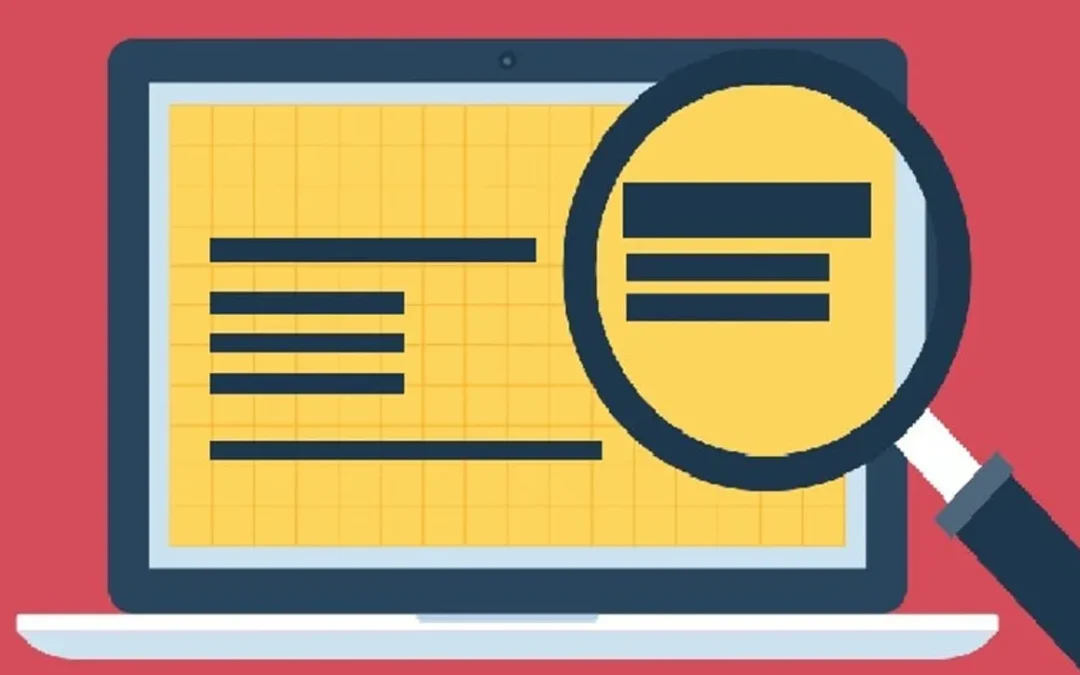
How to Write the Perfect Resume – Your Essential Guide!
Anytime is a good time to write the perfect resume. The beginning of the year is an especially good time since it leaves you feeling hopeful for a year full of opportunities and possibilities in the World of Work! And helps you to recap all your achievements and accomplishments of the year gone past. We strongly believe that the resume is not just a document to be written or rewritten for applying to job opportunities. The resume is a faithful journal of your career trajectory – a record of all your successes and learnings at every stage of your working journey. A reminder of where you started, how far you have come and where you still need to go. So whether you need to apply for a job right now or not, it is always a good time to perfect your resume. For all of you who’ve missed our previous posts on resumes, and for the rest of you who may have enjoyed reading them, here is our essential guide for everything you need to know about resumes and how to write them right.
Write the Perfect Resume – Decide the kind of resume that suits your profile the best
Spend some time deciding the flow that your resume should follow so that your experience and skills are displayed to their best advantage.
Chronological Resume – This format of resume is most popular and common, and is always sought after by the employer for its efficient timeline layout. The contents, i.e. your work experience, education and other details are listed in a reverse chronological order – the most recent being on top. Each position you list has to be supplemented by the qualifications you hold for the position and accomplishments achieved while in that position. Your education section is to have your latest degree first followed by any other degrees you may have acquired previously, and information about your schooling (up to 10 +2). Additionally a Skills section would help you to highlight any additional skills-centric workshop/certificate courses you may have participated in (again listed in reverse chronological order with the most recent one being on top).
Functional Resume – Going by the name, a ‘Functional’ resume is one which focusses more on an elaboration of your skills and experiences rather than a timeline format of positions held by you. Thus, if you have skills in the categories of Human Resources, Communication, Customer Service, and so on, your skills, experience and accomplishments pertaining to these categories are to be listed in bullet points under each heading. It has to be followed by a separate heading – ‘Employment’ in which you list your work order in reverse chronological order. This format gives more focus to skills than your work experience, however any kind of resume has to have a section in which your employment history is listed.
Combination Resume – This format lets you have the best of the Chronological Resume and the Functional Resume. It helps you highlight your skills as well as your progressive work experience in a timeline format.
For more on types of resumes, sample formats and how to tailor yours to suit your profile, have a look at our post, here.
Write the Perfect Resume – Get your Basics Right!
It does not matter whether you are writing your resume for the first time or brushing the dust off your long forgotten resume to make it perfect for today, keep these basics in mind.
Template for your resume : Start with a professionally designed template. There are a number of free templates on the internet, we recommend you check out the ones at Microsoft: Unless you are in the creative fields, we recommend choosing a simple template that does not have a lot of graphics and unusual fonts/icons on it. Most companies use automated systems(Applicant Tracking Systems) to process your resumes and if you don’t stick to the standards, the system may not recognize parts or all of your resume.
Use Appropriate Headings: It organizes the content of your resume making it easy to read and drawing the attention of the reader to the most important parts (remember the short attention span of the recruiter while filtering through hundreds of resumes). Here are some great dos and don’ts for the resume headings that you must read.
Format of your resume: Use a PDF format, unless otherwise told. However, it is best to save three copies of your resume, one in PDF, one in rtf and another one in a word format, so that you can use whichever is required and don’t have to fumble around for it.
Sync your Resume with all your Online profiles: This is crucial because it makes you appear consistent as well as authentic. This will also have your back in case of a background check.
Invest in your stationery: While you would have sent out a soft copy of your resume already, you will still be required to carry a hard copy of it for face to face interviews at most places. Use the best possible paper and ink to print out your resume, believe us, subtle things like this do make a statement.
Don’t make it an autobiography: Draw the line between the personal and the professional in your resume. Things like your marital status, parents’ names, their professions, your height, weight, et all are of no consequence in your resume.
Write the Perfect Resume – Do’s and Don’ts while Writing
Once you have the content and template ready, keep in mind the following points while editing your resume:
Always keep the design of your resume simple and readable. Avoid any fancy frills, those are always distract the reader away from the substance of your resume. Use ample white spaces and always prefer putting the information in bullet points, rather than in paragraphs, it is much more readable that way. Use a font size of 11 or 12, not too small, not too big!
Curate your digital footprints. Update your LinkedIn profile, and your other social networking accounts, cleanse anything you may not want your employer to ‘stumble upon’! (for more on why this is important, read the social media mistakes you need to avoid while job hunting).
Is your objective clearly stated? If not, make sure it is. Do not beat around the bush. This is one section that you can customize for the position and company that you are applying to.
Use ‘Action Words’ like ‘growth’, ‘build’, ‘driving force’, to make an impact on the reviewer.
Edit, edit and edit until you have done away with every redundant syllable! Keeping your resume as short and crisp as possible will always make it stand out!
Avoid typos at all costs. Take all the care to avoid any grammatical and spelling errors in your resume. It could be a real dampener!
Use a professional email id. If you are still using ronitdarockstarrr@iamuseless.com from your college days, switch over to a professional email id with your full name in it, and without any adjectives or other unnecessary words.
Always furnish genuine information. Remember in this digital age, your original credentials are just a click away. So it is best to be honest to the core while writing up your resume. You don’t want a background check to be contradicting the information you have shared with your prospective employer.
For more on Do’s and Don’ts while writing your resume and a great infographic on the topic, read here .
Write the Perfect Resume – Some cover letter basics before you Send your Resume!
In this digital age, the cover letter has been replaced by the cover email – but be it a letter or email, an introduction to your resume remains as important as ever.
Do your research on the organization/company you are applying to. Most of them have detailed instructions regarding what they expect you to write in your cover letter. If you know someone who works in the organization, get in touch with him and take his advice. If there is a referral system in place, see if you can get your resume submitted through it.
Address your email to the appropriate contact person. Find out the name of the person you are mailing your resume to. Even if the organization has a generic email to send resumes, they sometimes mention a contact person who handles all recruitment requests.
Your cover letter/email should convey succinctly your interest in the organization. Introduce yourself briefly and go on to mention why you are writing the email. Be sure to be explicit about how your skill set compliments the position you are applying to. Describe your skills and experiences, as required by the organization. Be careful not to copy as is from your resume: it shows you are lazy. Remember to write complete sentences and do a thorough spell check.
If asked by the organization, mention the name of your referees and how they are related to you. Give correct contact addresses for these people and make sure you notify them in advance regarding your application. Also include your own contact information at the end of the cover letter as well as in the resume so that the recruiters can easily get in touch with you.
A fine way to murder your job application is by making your cover letter generic. The reader should feel that you have read about their organization before mailing, and not simply sent a generic mail to all companies that you are applying to. Browse the organization website and get to know about their work culture, ethics and history. You should write how these qualities match your own beliefs, and how this would help you thrive in the organization. Customizing the cover letter according to the organization grabs the reader’s attention and gives you a definite edge over other applicants with generic letters.
For more on cover letter basics, read here.
Write the Perfect Resume – Apps that can make it easier
Did you know about these awesome free apps that can help you in building your resume?
Resume Now – If you are a rookie at resumes, this is the perfect app for you. The app has a simple interface which gives you step by step instructions on how to proceed with your resume. It has a range of templates you can pick from and allows you to save your resume in multiple formats. This app is the official resume building app for the site Live Career. You will first have to sign in (hassle free) and then you can even create cover letters, take free tests, save and download the resume you’ve worked on.
Pocket Resume – An easy to use app, with features that enable you to create, maintain, update and email your resume on your phone, on the go!
Career Igniter Resume Builder– A free android app you can use without even having to create an account. The app lets you export your resume in a word format, it also lets you save it and email it. However, their format is inflexible, meaning it is mandatory for you to fill in all the headings they have.
Resume Writing Secrets – A great app which gives you exposure to a lot of helpful tips and tricks for building a resume. Particularly handy when you have a lot of transit time!
Resume Genius – The USP of this app is that you can select from over fifty thousand professionally written resume phrases to incorporate seamlessly into your resume templates. Also, you don’t need to create an account, all you need to do is click “Create My Free Resume” and get started.
This article on techrepublic has a lot more interesting apps you could try out, have a look here.
We hope you enjoyed reading our exhaustive compilation on everything you need to know to write the perfect resume! Your resume and your cover letter are your marketing pitch to get your foot in the door. Remember that while you may have a kickass background, it may mean nothing unless you are able to communicate it effectively in the form of an articulate and well-structured resume. Craft a resume which inspires them to hire you, and we hope this article was full of the inspiration you needed to start cracking on the perfect resume!
Bonus Infographic from essaymama.com : We have included this smart checklist to help you assess your resume and make sure that you have got it all together. Check it out!


